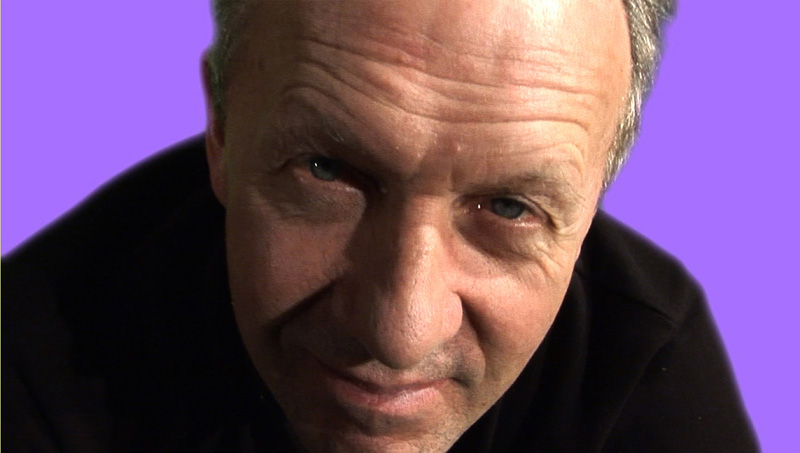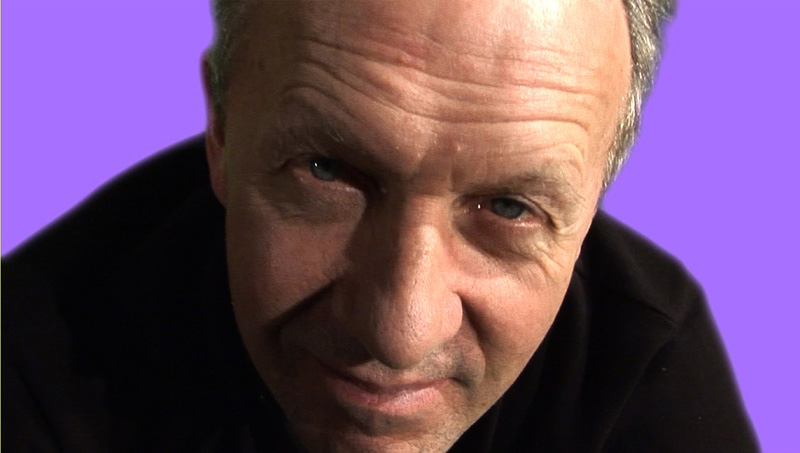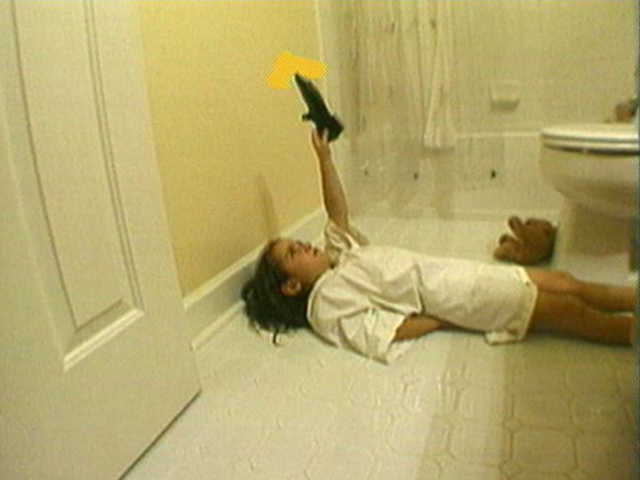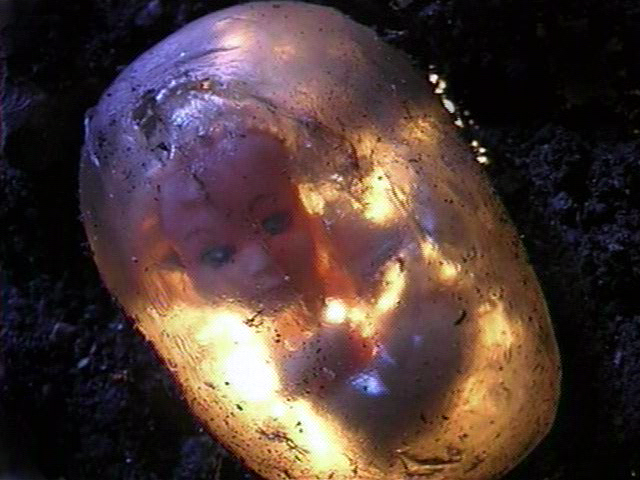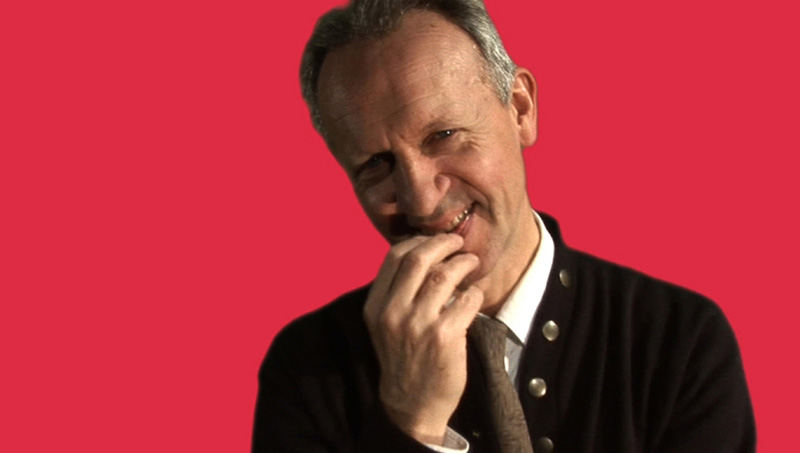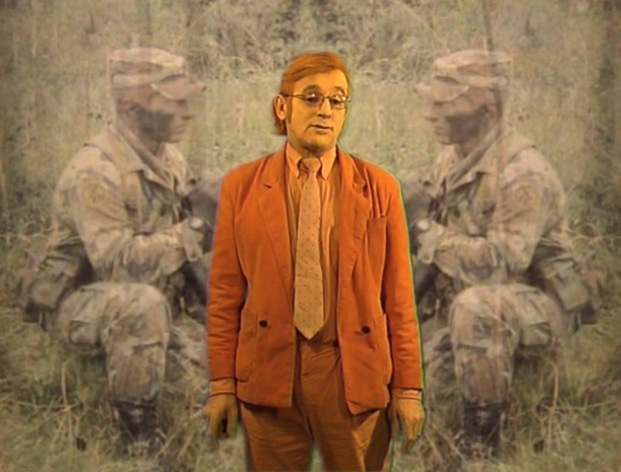Part of Fall 2010
Jennet Thomas’s work emerged from the anarchistic, experimental culture of London’s underground film and live art club scene in the 1990’s, where she was a co-founder of the Exploding Cinema Collective. It now screens extensively in international film festivals and galleries. Her work began as hybrid spoken word performance and projections for a live audience, it now combines a variety of filmic languages, ranging from soap opera to experimental and underground filmmaking, from sci-fi to musicals. “I like to explore unexpected processes of sense-making. My narratives are often fractured, absurdist–generated via dream-logic and increasingly experimental methodologies, inspired by odd corners of British culture, driven by the urge to tell.”
“Jennet Thomas is a zealous god-devil, who constructs bizarre narrative worlds in which we can recognize the pull of gravity, the attraction of belief or the logic of causality, but these forces are somehow reconfigured to describe a place that is way off the map of normality, perhaps with one foot in the realm of the paranormal. And yet Thomas suggests the near-feasibility of the absurd by expressing messages from alternative dimensions, bizarre social codes and accounts of recent cultural history through everyday means. Sausages, sporting trophies, lengths of string and packages sent through the post are the tools with which normal looking people conduct their peculiar activities in community halls, supermarket car parks, back gardens and nicely kept living rooms. The bizarre, Thomas seems to suggest, is a close relative of the ordinary.”
Program:
Miranda July:
Getting Stronger Every Day, 2001, 7 min. “Getting Stronger Every Day includes [two] boys’ tales [that] are like mystical objects placed on the living reality of the man storyteller. In other parts of the movie actual mystical objects hover in peoples lives without a myth or story attached. I like to think about how these dimensions interact simply and can be enacted: real life/story/worldly/spirit/video/flat drawing.” – Miranda July
Jennet Thomas:
Important Toy, 1997, 8 min. A young girl buys a weird toy from a charity shop. She forms such an intense relationship with it that it develops special ways of communicating and a strange connection to her that seems to defy the laws of physics. As the situation escalates, it seems that repression is the only way forward.
4 Ways He Tried to Tell You, 1999, 7 min. This is a video about the thing that won’t go away. It has been trying to contact me by altering bits of my reality for several years now, and this 7 minutes is a clear demonstration of that. My 8-year old nephew got drawn into the whole thing, and that’s why his voice is on this tape. I’m not sure if it’s dead now. We’ll just have to see.
SHARONY!, 2000, 11 min. This is the story of two young girls who dig up a tiny woman from the back garden. They incubate her in their mouths, in their bed, they lock her in a dolls house wallpapered with pornography to make her grow up faster, feeding her through a tube in the door. When she is life-sized and ready to play they take her to the disco..
Because of the War, 2005, 14 min. “Because of the War things were changing. Very few toys or games were left and music was almost over. Tap water was tasting female and television only came in nasty spasms.” A surreal and sometimes comic meditation on how war affects the hopes and dreams of ordinary people.
The Man Who Went Outside, 2008, 10 min. A distinguished looking man is apparently trapped in an ever changing void of colour, locked in a power play with a perversely operated camera. A voice over tells us extraordinary things – how this man is special – the first man to “have a baby.” A playful meditation on the idiocies of making sense.
Return of the Black Tower, 2008, 15 min. Conceived as a response to John Smith’s 1987 classic short experimental film, The Black Tower. “Barmy, baffling and weirdly funny… an elliptical, satirical examination of contemporary belief, as much as it is about the problem of art as an incommensureate, incommunicable experience.” – JJ Charlesworth
UK artist Paul Tarragó’s 8-part video Paul and the Badger (2005–9) will screen as a serial throughout Pleasure Dome’s Fall 2010, with episodes preceding each screening of the season. Recasting a glove puppet TV show through his own present-day sensibilities, Paul assumes the role of kindly uncle mentor to a household of capersome woodland creatures. Mortality, self-sacrifice, depression, altered states of consciousness and transgressive art practices are all explored as part of their everyday lives together in a series that is equal parts moral instruction and narrative play.
Episode 1 (11.5 min.) The sight of a model skeleton unearths a repressed memory in the Badger, prompting him to ask some pretty tricky questions about life, death and self-sacrifice.
+
Episode 2 (9.5 min.) The Badger and the Squirrel relay the world through a lens.
Jennet & Paul in Toronto, Sept. 22
Kitchen-Sink Surrealism – by Jon Davies
Over the past two decades, London-based artist Jennet Thomas has evolved a distinctive video practice that embraces a homespun aesthetic to produce absurdist narrative pleasures that stubbornly refuse reason. Strange and complex, Thomas’s work develops experimental forms of storytelling to make sense of what seems like an increasingly non-sensical world.
In tapes like The Man Who Went Outside (2008) and Because of the War (2005), Thomas takes the sober British authority figure – broadcaster, politician, manager, teacher, clergyman, etc. – and subjects him to her comically bizarre scripts. The arbiters of rational order become a fount of delightful ludicrousness; as Sally O’Reilly has written, society’s “illusion of consensus” and “legibility” are befuddled. This Man who recurs in Thomas’s work is just one ingredient of the rich stew of mass-cultural detritus and popular memory that she cooks up in each tape. Her concoctions give us a potent portrait of her kingdom’s quietly deranged collective consciousness. Thomas’s work taps into distinctly British currents of surrealist moving pictures, from Lindsay Anderson’s carnivalesque 1973 epic O Lucky Man! to the idiosyncratic work of fellow video artist John Smith to odd cult series like Doctor Who. The TV becomes a gateway for the surreal to be unleashed on the domestic home, providing entertainment for a British suburbia that Francis McKee has described as “seething with unconscious and repressed desires.”
Thomas’s tapes appear so very strange due to the juxtaposition of everyday props, sets and figures (including her own family and friends) – as well as endearingly low-budget special effects – with her otherworldly subject matter and existentialist concerns. Characters are painted in alien shades of orange, purple or green; local charity shops or backyard gardens can always be relied on to generate fascinating talismans. (In Important Toy [1997] and SHARONY! [2000], little girls develop extreme attachments to objects/creatures they come across in these sites.)
In Thomas’s folk cosmology, abstract and metaphysical concepts take on geometric shapes, as if they are so beyond comprehension that we must make do with the simplest lines and planes to visualize them. (She shares this trope with the American video artist Miranda July, whose 2001 video Getting Stronger Every Day opens the program.) In The Man Who Went Outside, both the enigmatically vague concepts of “the outside” and “the game” discussed by the narrator take the form of “shifting structures and interdependencies, folding into itself a number of complex variables, in order to produce recognizable outlines/outcomes.” In what is perhaps Thomas’s masterpiece (so far), Return of the Black Tower from 2008, two people testify (as if in an AA meeting) to a mysterious, unsettling experience they’ve endured that has transformed society: “I know some people have seen it as a stain, a pattern stuck in the visible world, but I’m not sure that’s how it seems to me… some people said it’s like meaning embedded into the relation of things… it was like a shape… a kind of multi-dimensional hole that keeps rotating.”
In The Man Who Went Outside the narrator warns, “Don’t be alarmed, when the first baby comes out to greet you, it may make unwelcome gestures: the pain shape, the lost shape, the broken shape.” These broken shapes are the imperfect, worldly manifestations of the idealized Platonic forms that Thomas is fascinated by. Her visionary work is thus stricken with an atmosphere of nervous anxiety and imminent magic: the world is not what you thought it was, and its hitherto unimagined true and perfect forms must be kept hidden from sight lest your own psychic integrity be irrevocably shattered.
Other in-person Jennet Thomas events:
Master Class: My Recipes, and why I won’t stick to them
Sunday, September 19, 2–5 pm, $30/25 TSV & PD members
@ Trinity Square Video, 401 Richmond St. West, Suite 376
416-593-1332 www.trinitysquarevideo.com
“I will share with you my various and idiosyncratic methods for making work – from developing tight monologues, to improvising structures from a purely visual idea, often using a yeasty dough of storytelling and genre forms to bind them. I will also talk about how the process continues into filming, sound design and editing.”
Jennet Thomas: Lecture and Potluck Dinner
Sunday, September 19, 7 pm, $5 or food item to share
@ Trinity Square Video, 401 Richmond St. West, Suite 376
Co-presented with FAG the Feminist Art Gallery
Focusing on her ambitious new installation piece All Suffering SOON TO END! (2009), Thomas will screen excerpts of the video and expose some of the roots of her creative psyche, exposing us to some of the British TV series viewed in her 1970s youth that influenced her latest project: the disturbing edges of work by Dennis Potter and Lindsay Anderson, as well as frightening children’s programs, sci-fi and dark comedy.
Jennet Thomas: The Broken Shape co-presented with the Available Light Screening Collective (Ottawa)
Friday, September 17, 7:30 pm PWYC
@ Club SAW, 67 Nicholas St., Ottawa
availablelightcollective@gmail.com
Thomas’s Current Research
Thomas’s video narratives are absurdist, fractured – using uncanny visual and verbal puns- mixing elements of the banal and the bizarre. Experiments with sound design are combined with unusual collisions of narrative genres, catalyzing unexpected processes of sense-making. Her videos often contain passages that look like low budget T.V. drama, news, or childrens’ programmes, as well as activity recognizable as Performance Art, with abstract – and often disturbing – animations and props.
She has recently been working with performers to interrogate the ubiquitous phenomena of the ‘TV presenter’, and ‘reality TV confessional’ exploring how the audience interprets layers of truth and reality in the performance by distortions of the performers’ normative appearance; from subtle adjustments in make up and performance to physically painting them in bright colours. Thomas enjoys playing with the class structures of cultural production: professional, amateur, hobbyist, underground – investigating ideas of truth and cultural belonging by inventing semi-bogus ‘back garden’ urban myths and rituals. Her work is experimentally inquiring, but also values the qualities and uses of entertainment.
She is interested in questioning our habitual, and often complacent, processes of ‘making sense’ of the world via moving image media, by deconstructing and reconstructing the familiar into new, dissonant, psychologically and poetically resonant forms. She is currently working on a collaborative research project to make a series of experimental narrative films – which attempt to accurately inhabit the experiential language of dreaming – using everyday moving image language, with leading Dream research Psychologist Jennifer Parker of UWE Bristol, who is pioneering new methodologies of dream research.
